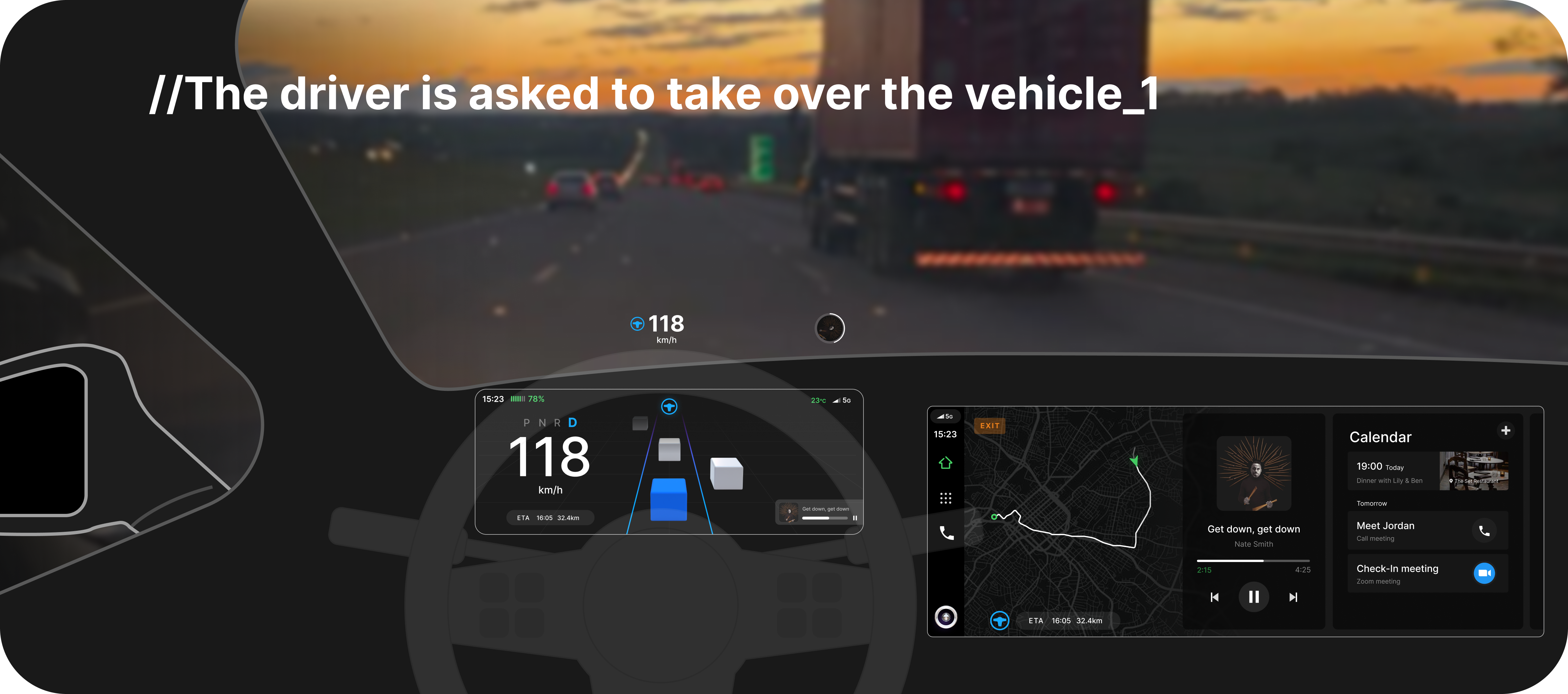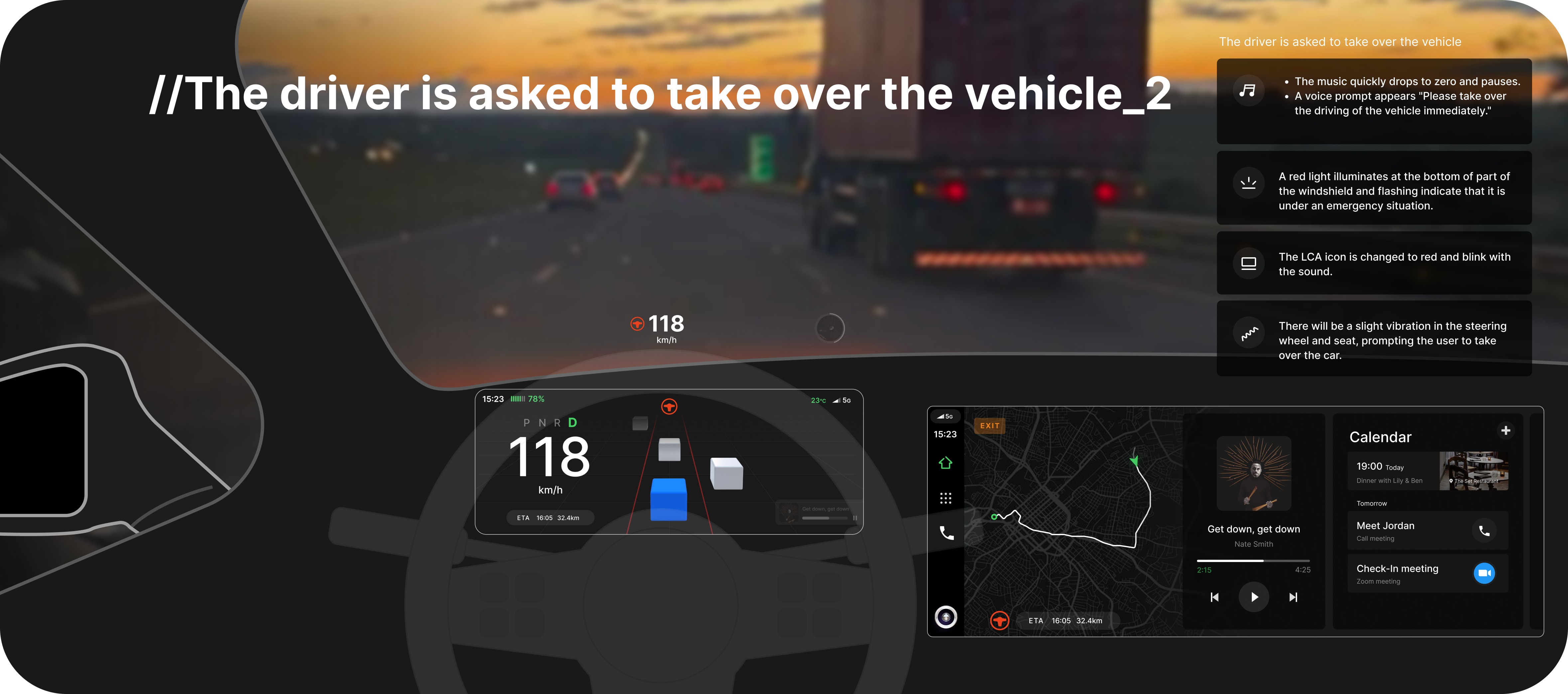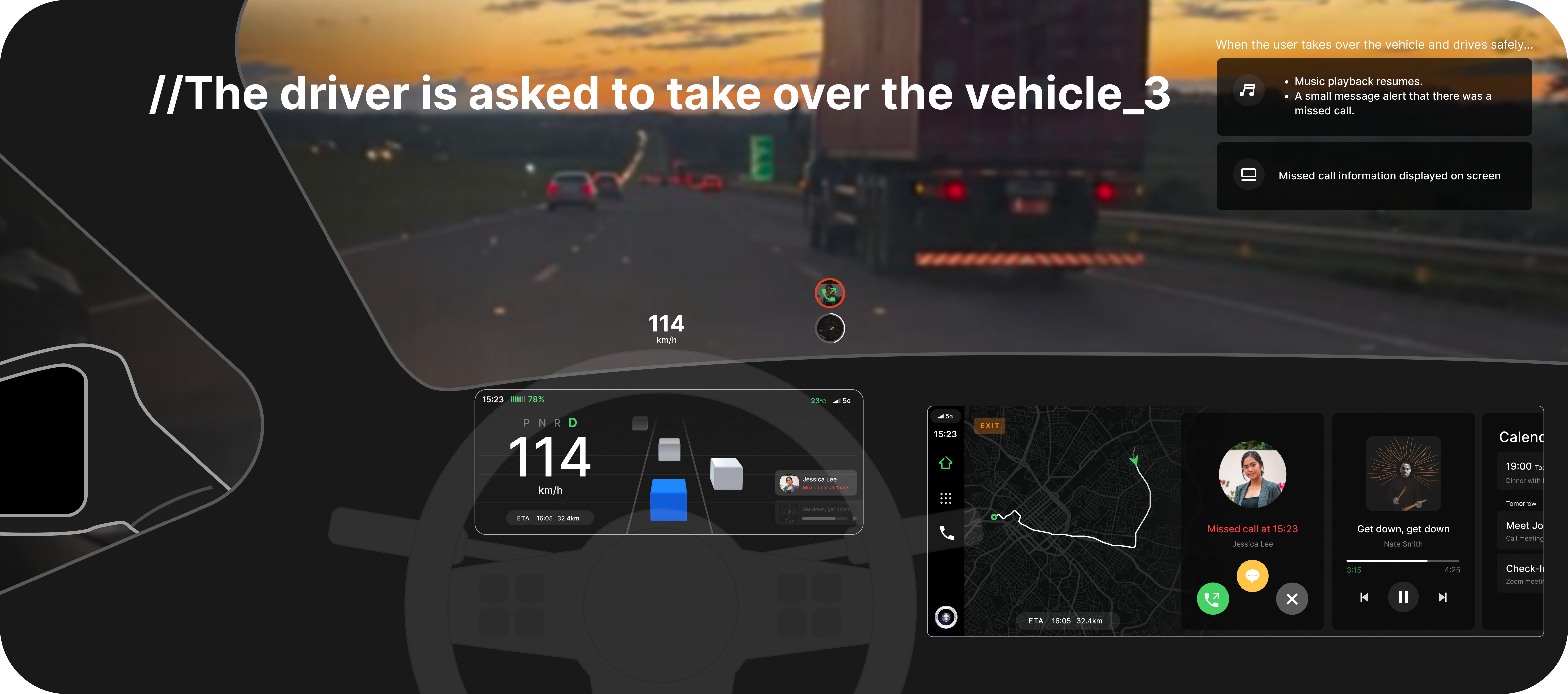The mobility of the future
August 2018 – February 2021

About VW Future Center Europe
The Volkswagen Group Future Center's functions go beyond standard product development. The Center focuses on the top for customer experience, interface design, operating logic, interior concept, infotainment, and entertainment for the mobility of the future.
During my 2.5 years at FCE, I focused on designing the user experience for L5 autonomous driving and the user experience for the ID family of products.
My role
In-Car screen design, HUD design, Mobile App design, Voice Interaction design, XR design, Research, User test
About showcase
Due to confidentiality agreements on all projects, here I will discuss more about work processes and my views on future mobility. To showcase the design process, I also presented a design use case related to automobiles, although it is not a project from the FCE department.
As a UX designer, who I work with...
Our department's projects are organized in three-month cycles. As per our strategy, each team is assigned a specific topic, and each quarter, we can propose ideas related to that theme. Based on the topic, I will draft a Design Brief and collaborate with the team to devise project plans and expected outcomes. I'll engage in research with fellow researchers, facilitate workshops, and participate in brainstorming sessions with team members. Close collaboration with engineers is crucial as technical constraints will shape our proposed solutions.
Additionally, apart from our UX department, we frequently partner with car interior designers, material designers, and craftsmen. For instance, we collaborate on creating seating bucks or developing hardware and software prototypes.

How I do research...
The research phase is pivotal for our projects, which are primarily centered on cutting-edge topics. I conduct thorough primary and secondary research to grasp the evolving needs of future mobility users across diverse demographics, including different countries, regions, genders, and age groups. Our designers and technologists actively explore the latest technologies to enhance the possibilities of human-computer interaction.
Future mobility experiences extend beyond screen-based interactions, encompassing tactile, physical (body and gesture), voice, AI, and XR interactions.
👤
User interview
📄
Survey
🧑💻
Expert interview
🏢
Volkswagen Stiftung
🚗
Research team from a brand
🎛️
Tech research
🚙
Competitor analysis
📰
News & Report
Collaboration
All team members collaborate to define problem statements, craft personas, identify user needs, and map out user journeys, actively engaging in brainstorming sessions. Throughout the process, every role plays an active part. When conceptualizing ideas, we prioritize empathy with users while also integrating thorough technical insights.

One Pod
The OnePod project is a public project I have been involved in designing. Similar to Sedric, OnePod will be available to users 24/7 and can be summoned at any time using the Volkswagen OneButton, the mobility app, or the digital assistant for convenient door-to-door transportation. The OnePod series will make a significant social contribution by providing individual mobility to visually impaired individuals, older adults, those with physical challenges, and children.
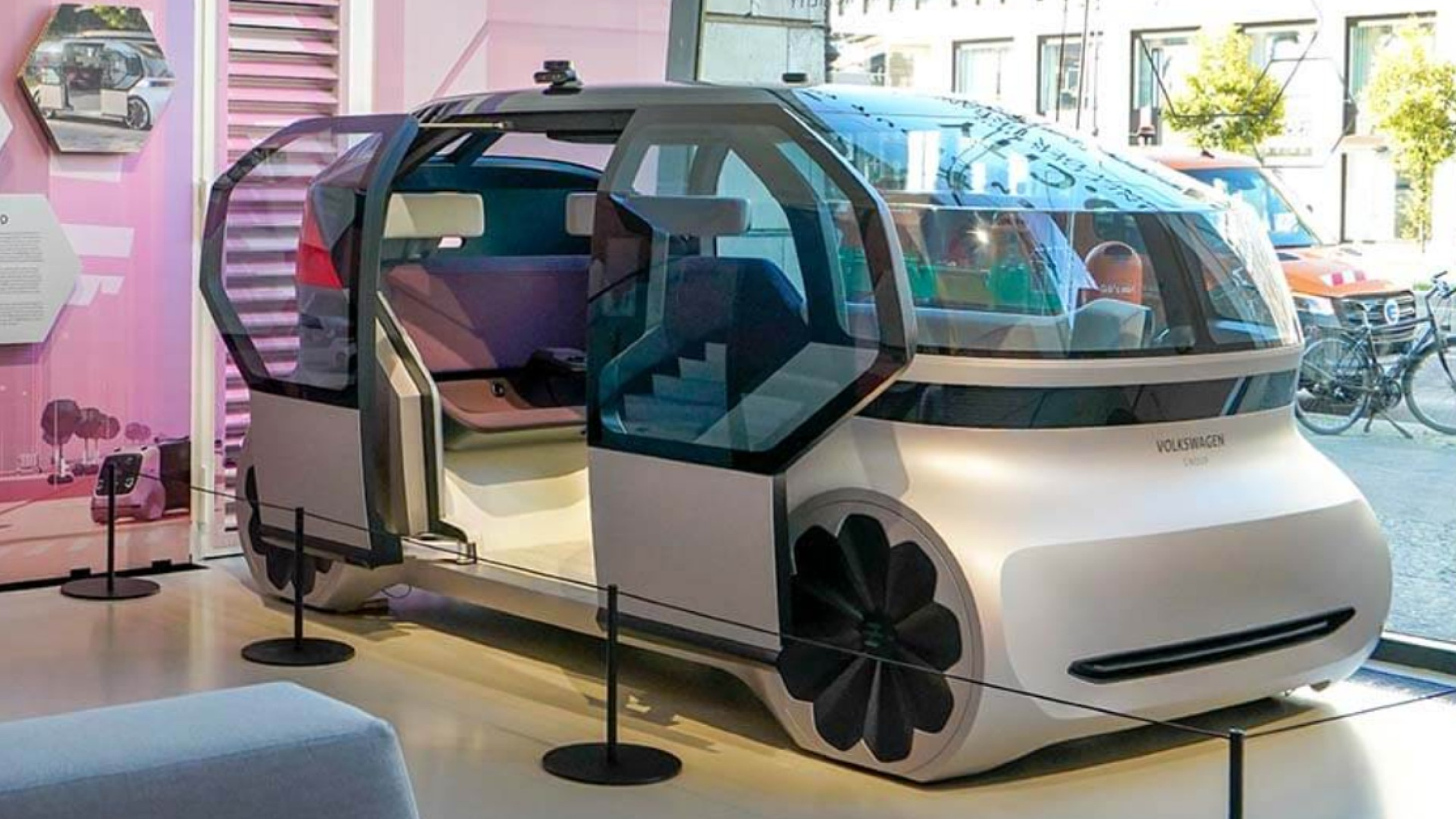

User test
Many of our design proposals are based on the vision of future life and mobility, the latest technology and papers, and constantly exploring different possibilities. Of course, these solutions still have limitations in the implementation of mass-produced cars. Although it is a conceptual design, we still try our best to simulate the use environment for simulation testing.


Use cases
Since most of our projects cannot showcase the design process, I took a 12-hour design challenge to demonstrate my design approach and methods for the mobility topic.
Task: A user is driving on a highway listening to music and they decide to use the lane change assist feature to change lanes. As they are changing lanes the user suddenly receives a call. Find a balance between technological advancement, delightful design and safe user interactions.
Keep in mind:
- The vehicle is a luxury sedan and has L2 and L3 autonomous capabilities.
Design experiences should both safe and delightful. - How can you make the best use of all three screens in your experience?
- What kind of inputs do you need to consider (e.g visual, haptic, sonic)?
- How can you keep the user's eyes on the road as much as possible?
Screens:
- HUD 1420x355
- IC (Instrument cluster) 12.3, 1920x720
- IVI (in vehicle infotainment) 3840x1440
Research
Due to the limited availability of users familiar with lane change assist, I focused on secondary research and gathered insights from my friends about their experiences with highway driving and lane changes.
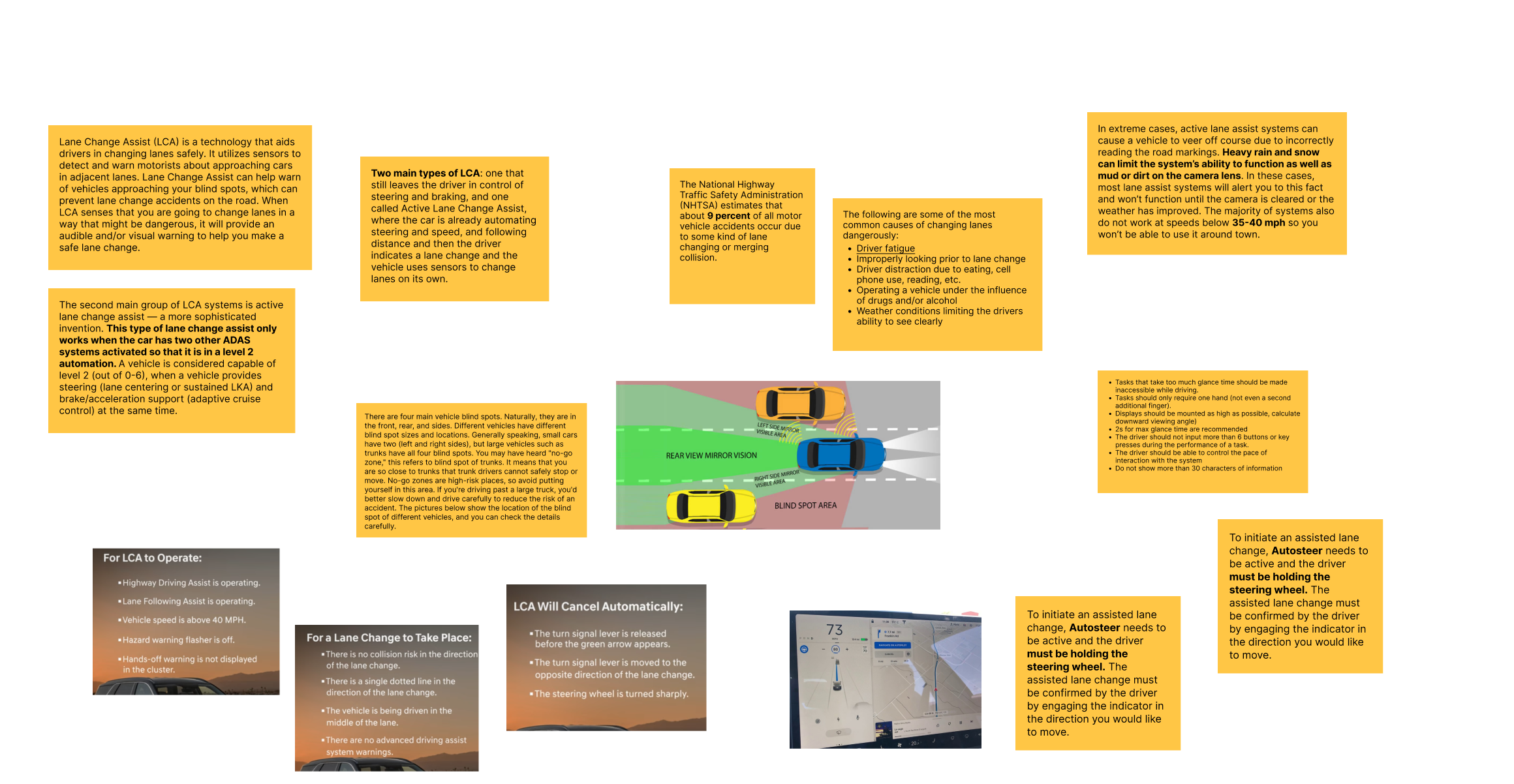
Persona & Journey


Ideation
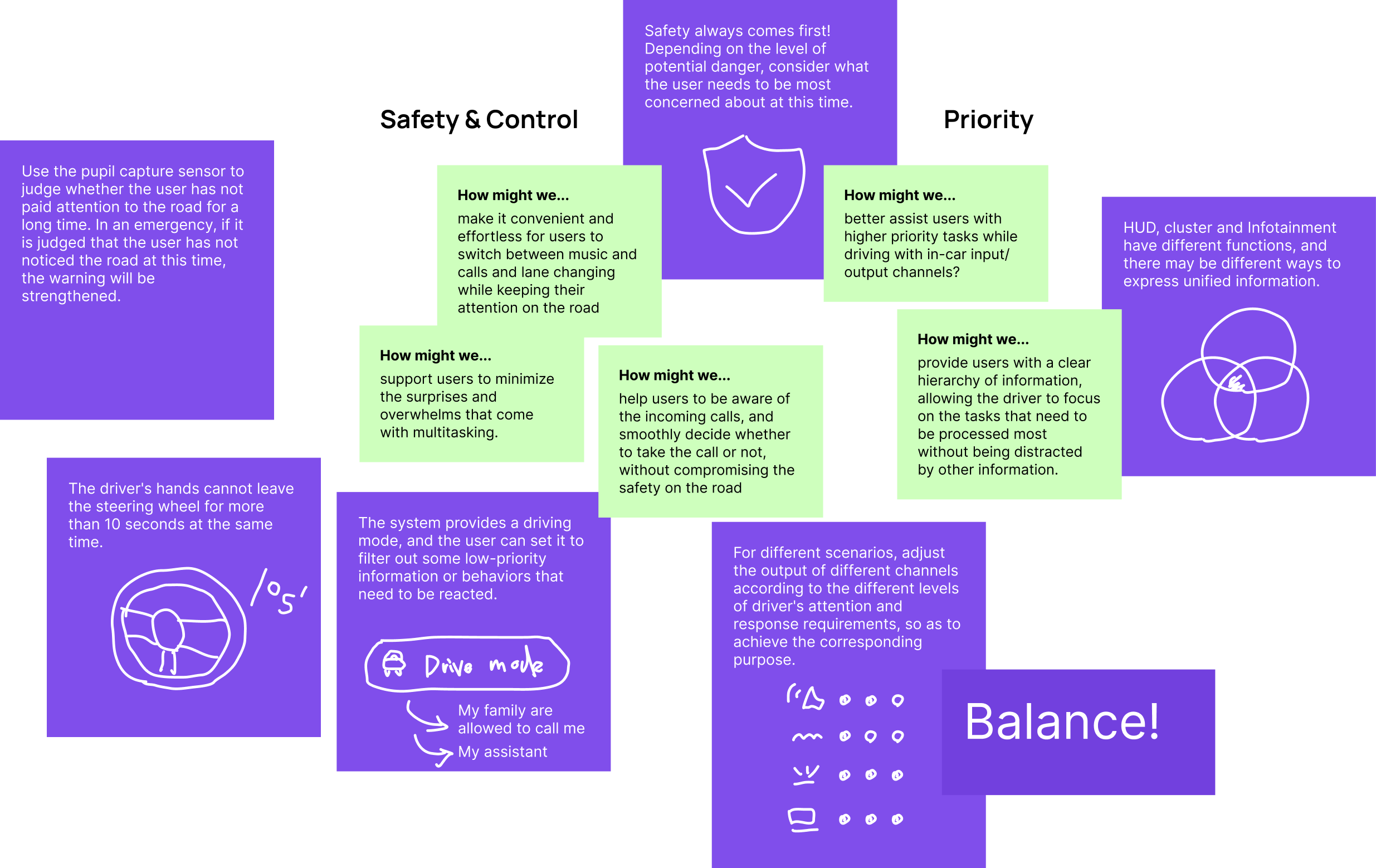
Flowchart
Once I identified the problem I needed to address, I proceeded to analyze potential scenarios in this multitasking context using a flowchart. From the flowchart below, you can see that although there are five possibilities, we can categorize them into three types. Moving forward, we only need to provide design solutions for these three types of scenarios.
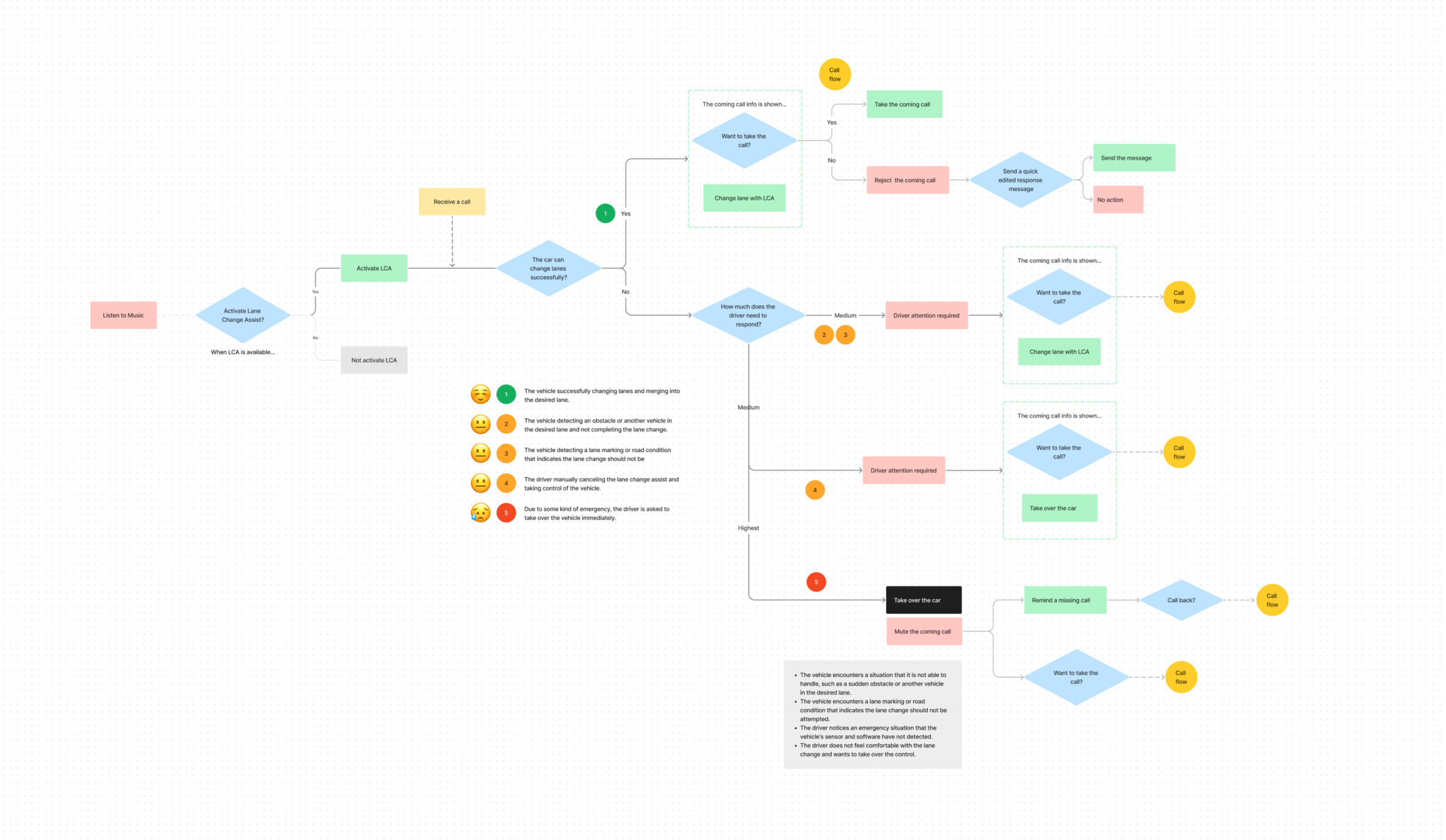
In-Car framework
The foundation for our solution is to first understand the setup inside the vehicle. As shown in the diagram below, we primarily have three available screens, and the car provides haptic, auditory, and visual feedback.
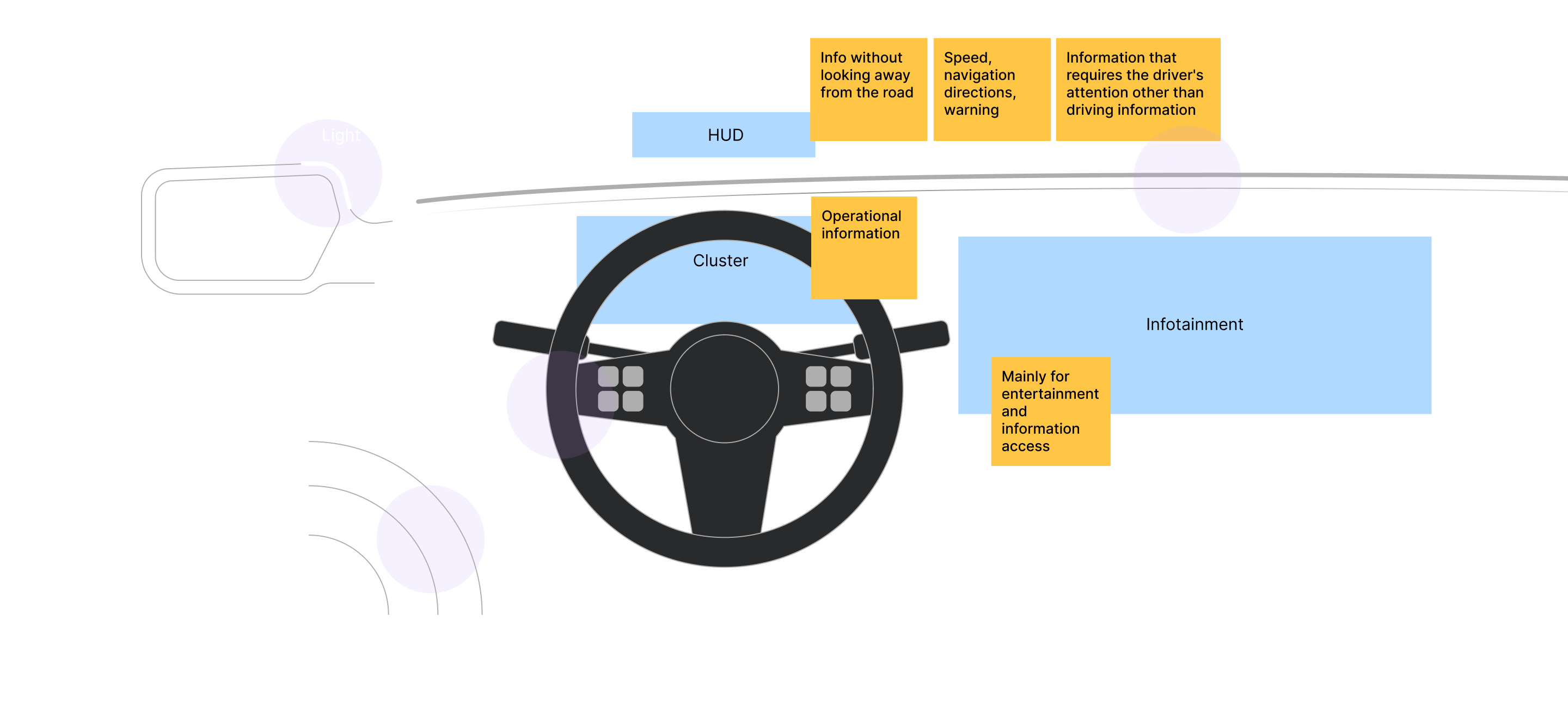
Concept
My design concept primarily revolves around delivering distinct alerts and instructions in response to three different levels of urgency through various in-car channels, including input and output devices.

Scenario 1 - Activate LCA
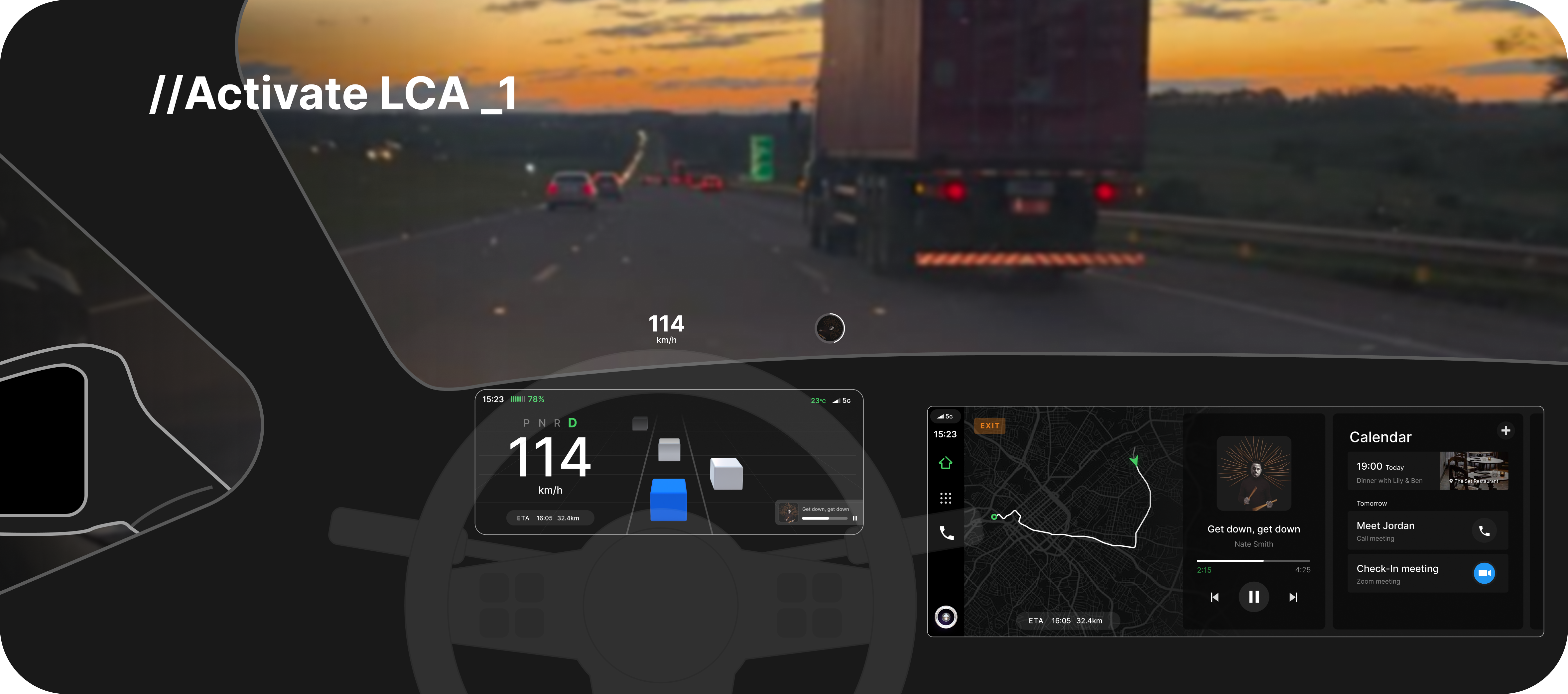
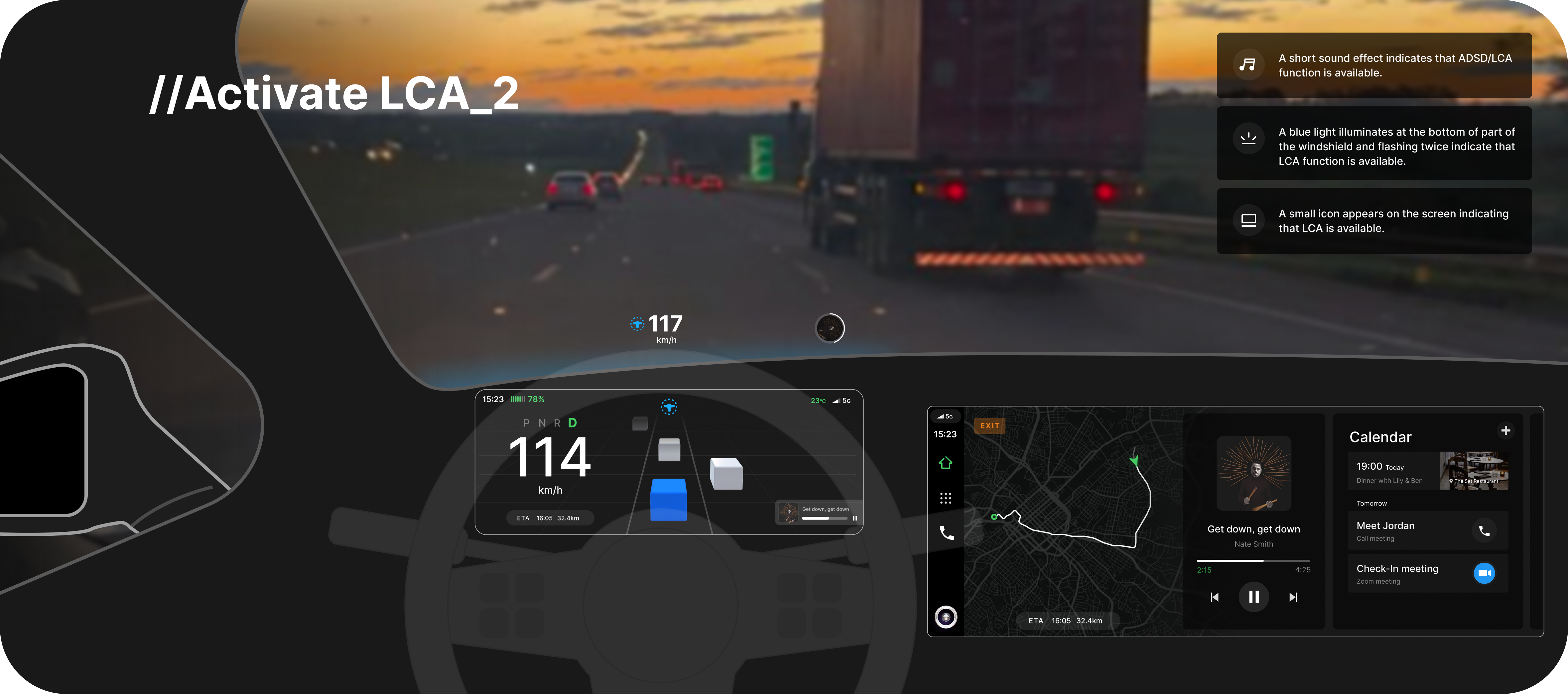
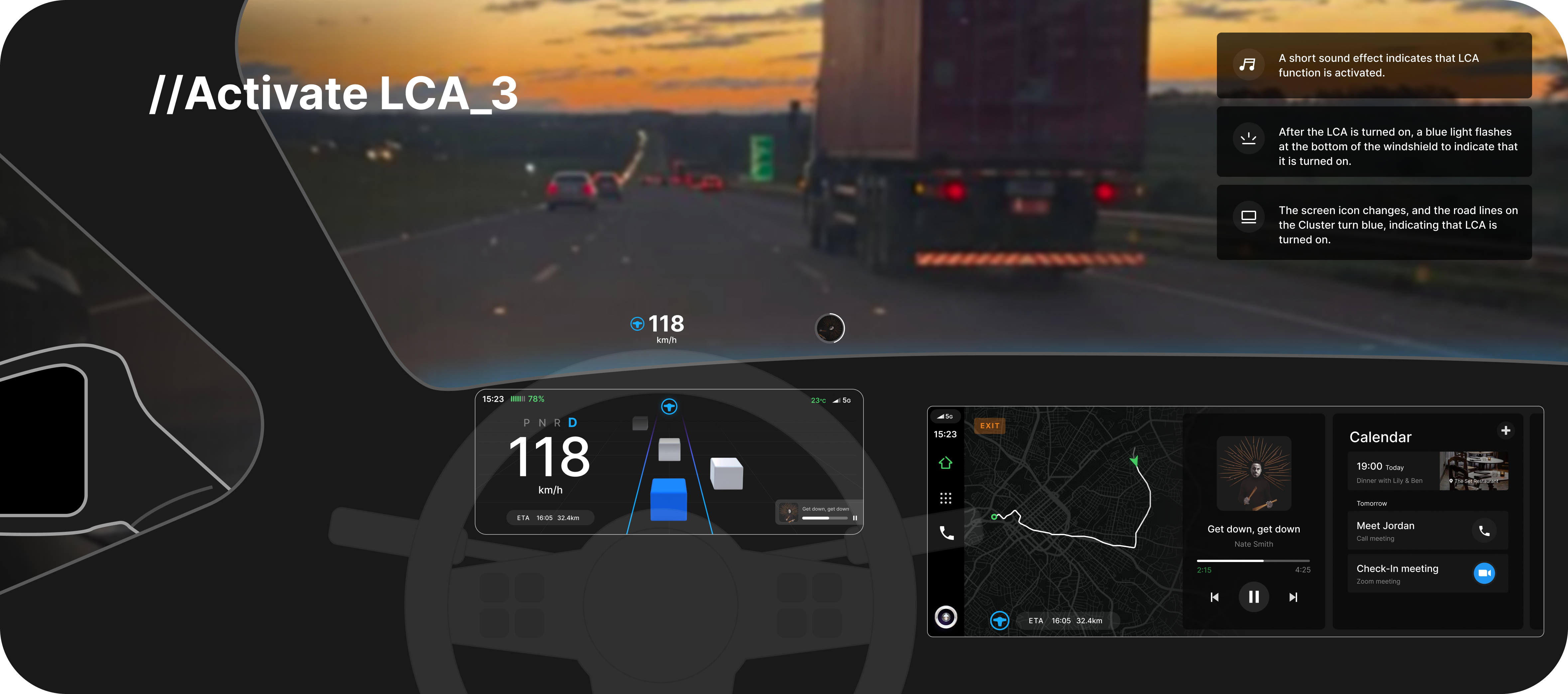
Scenario 2 - Happy path
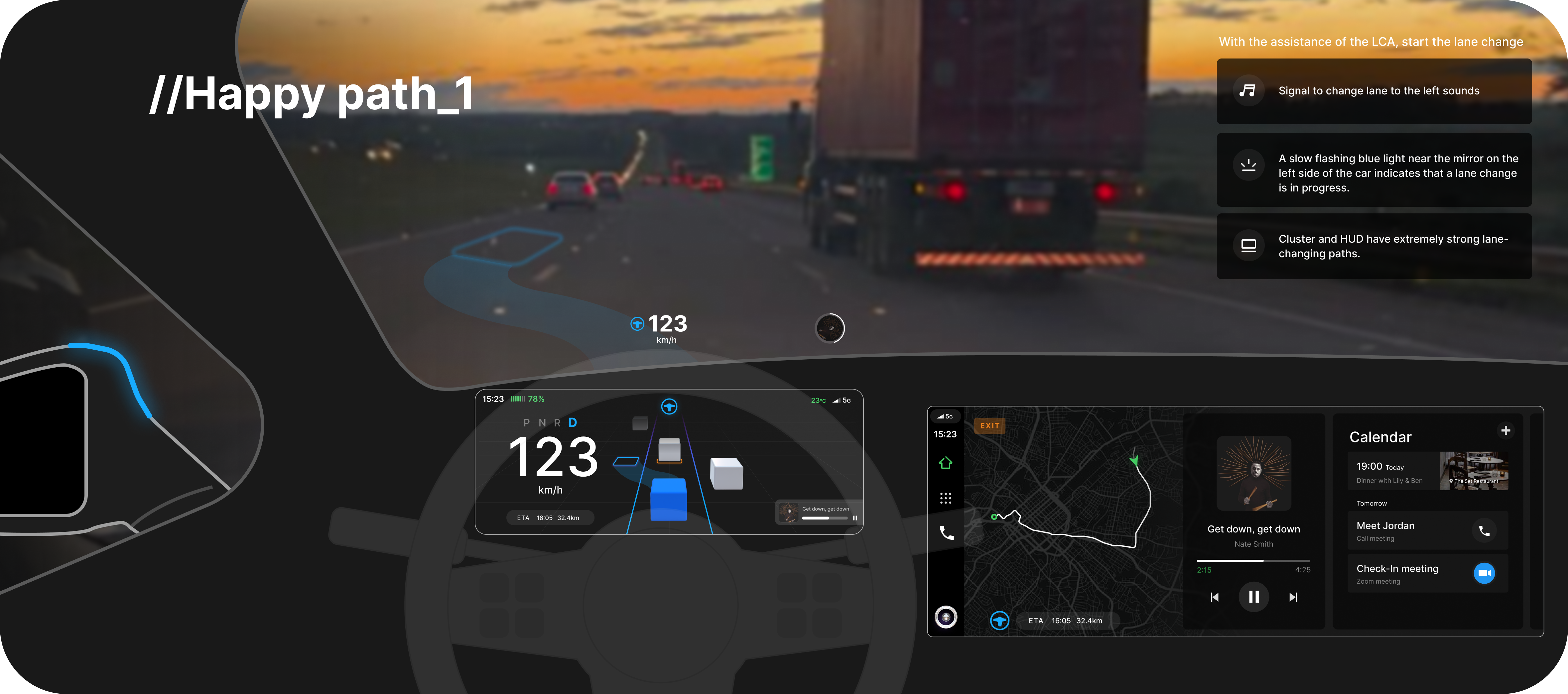
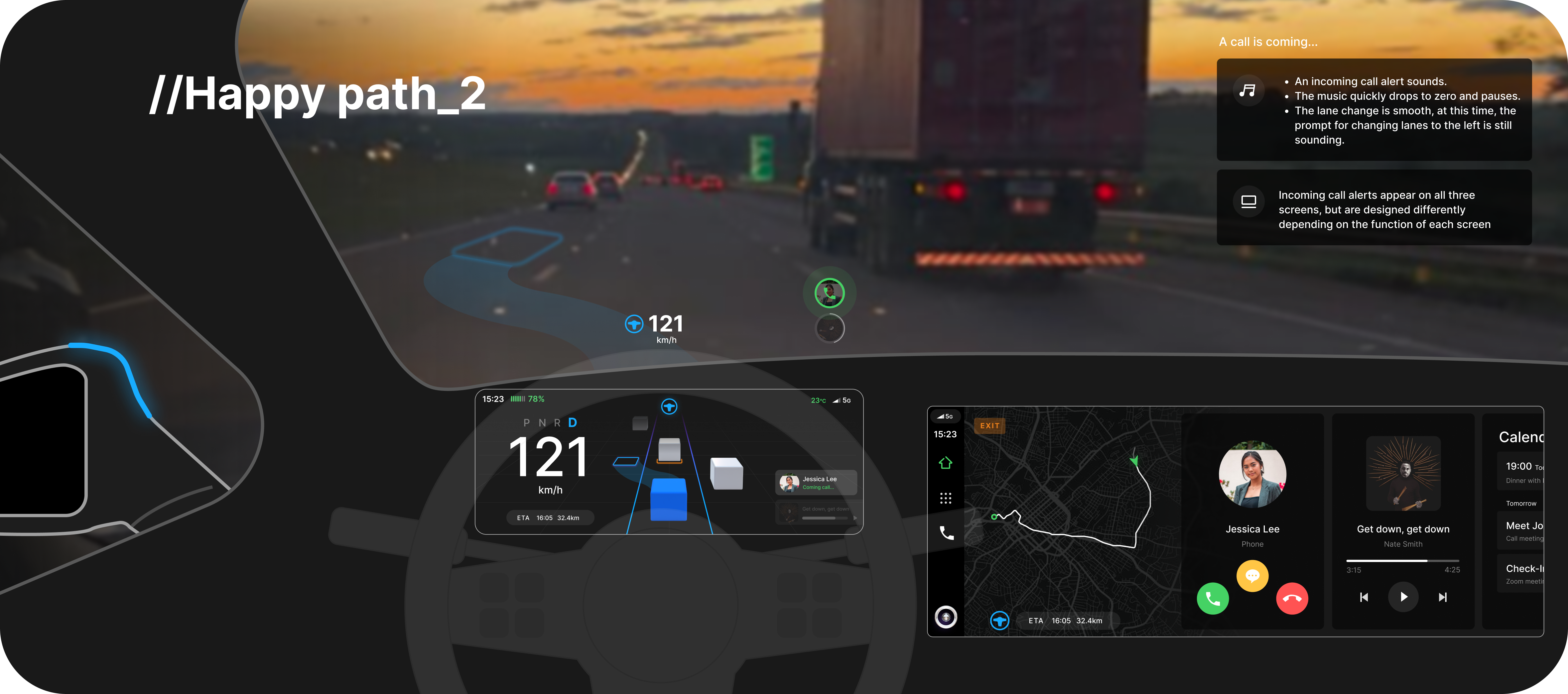
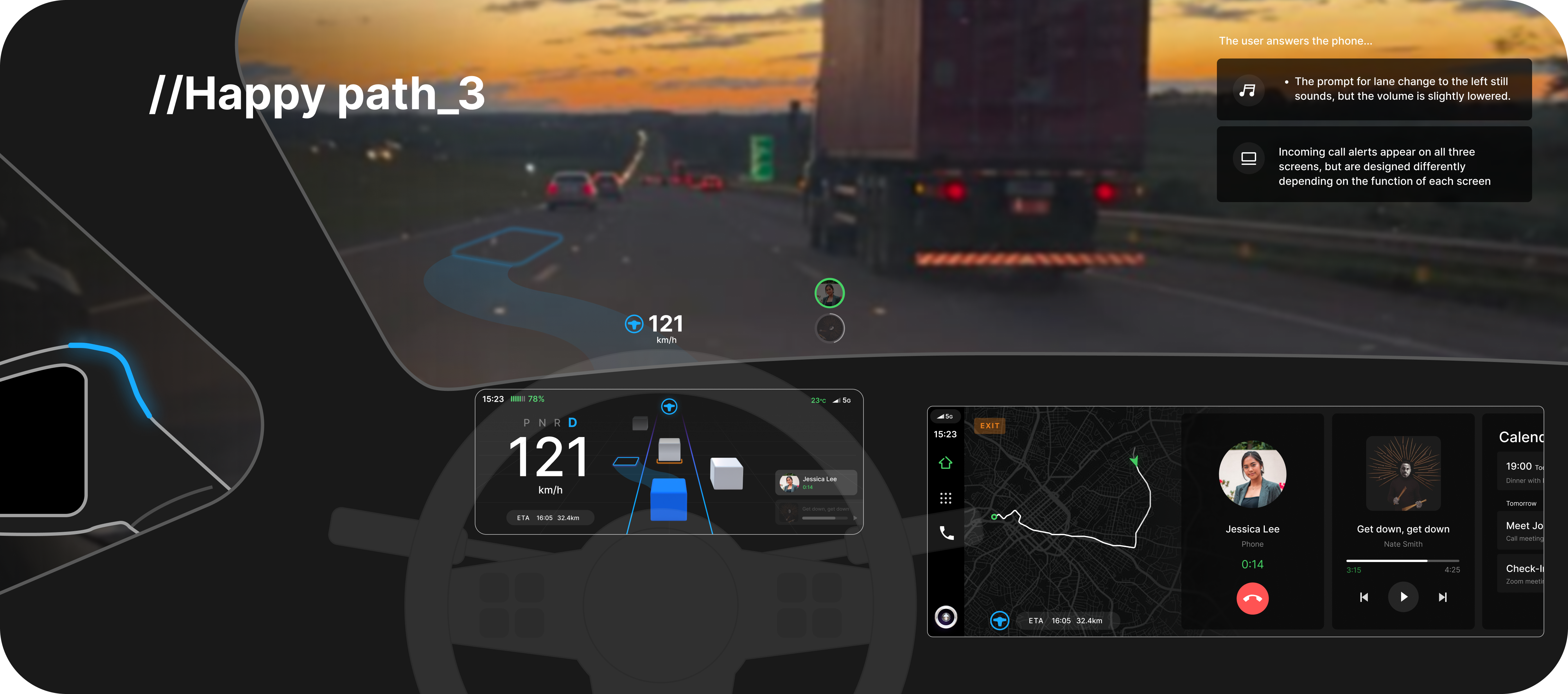
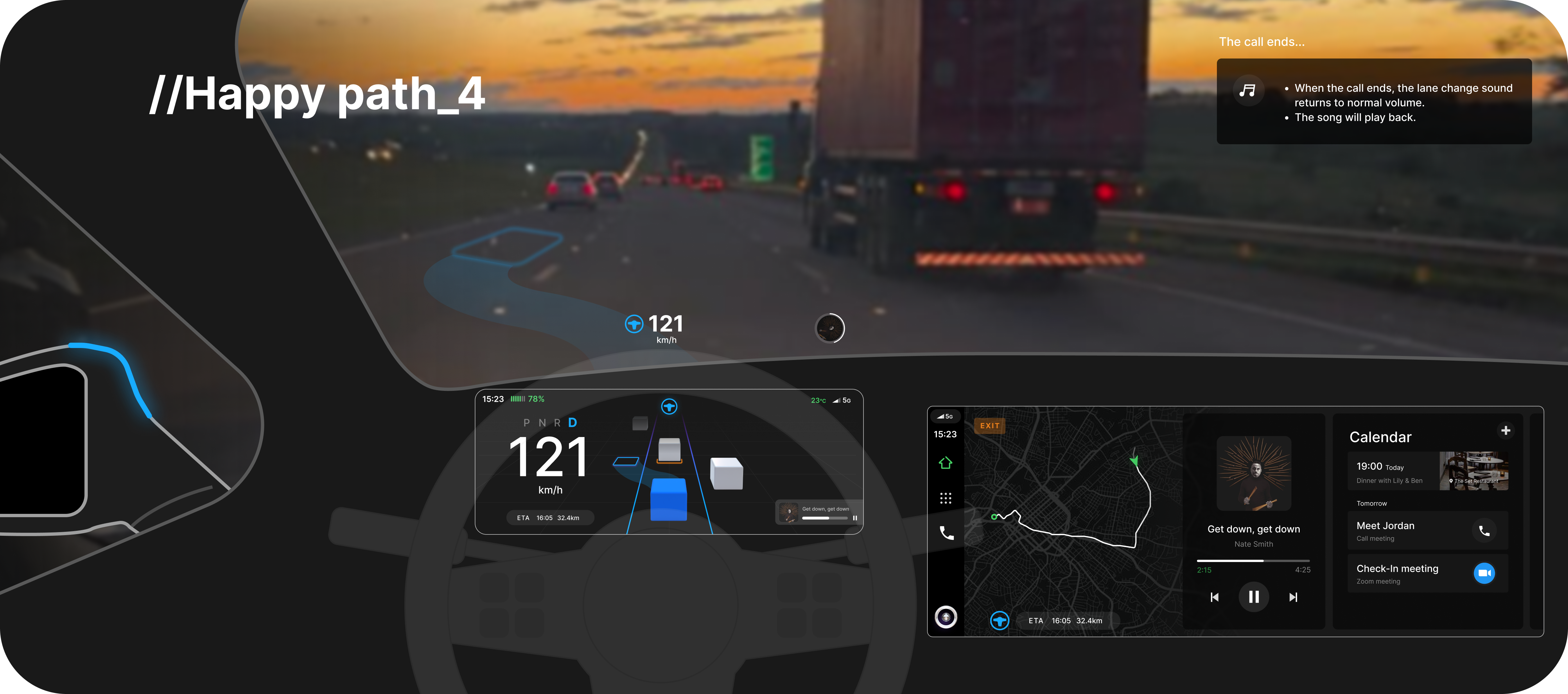
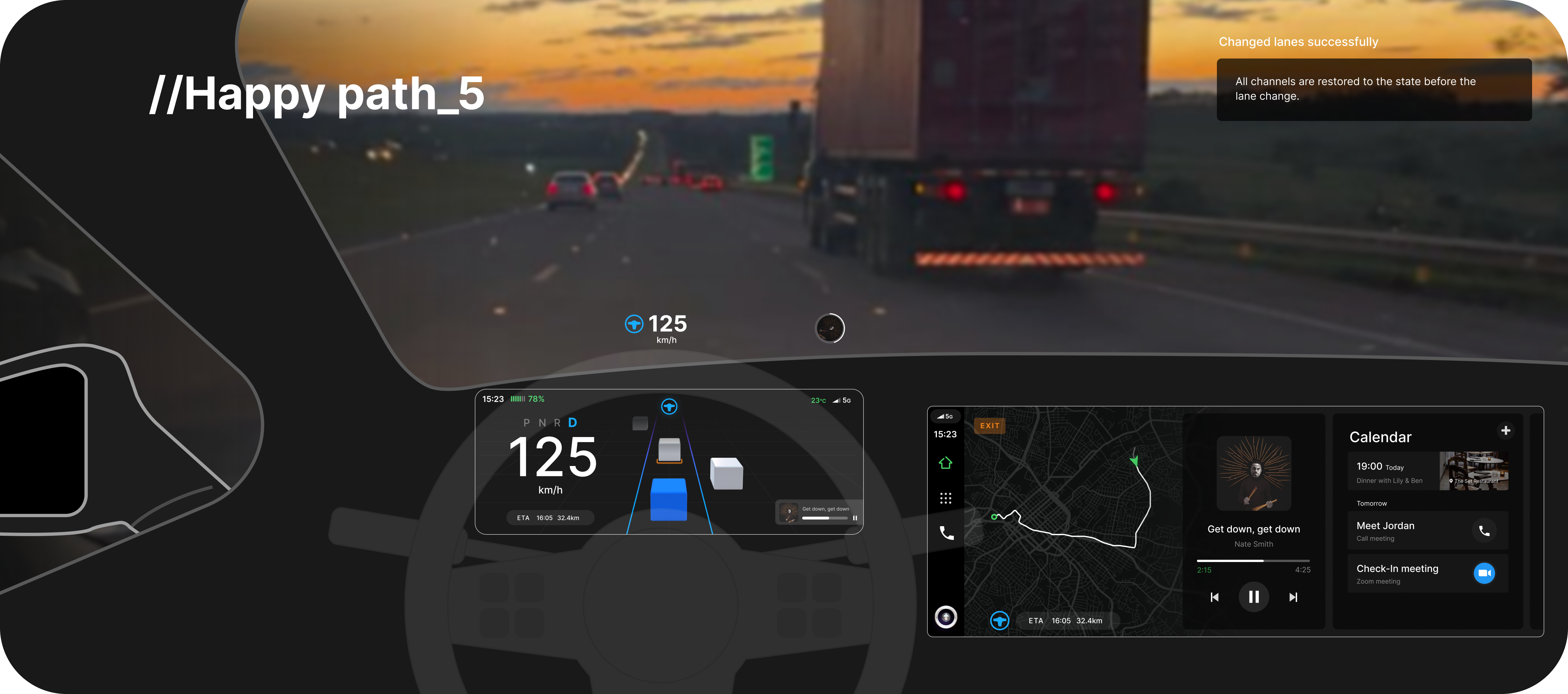
Scenario 3 - Driver attention required


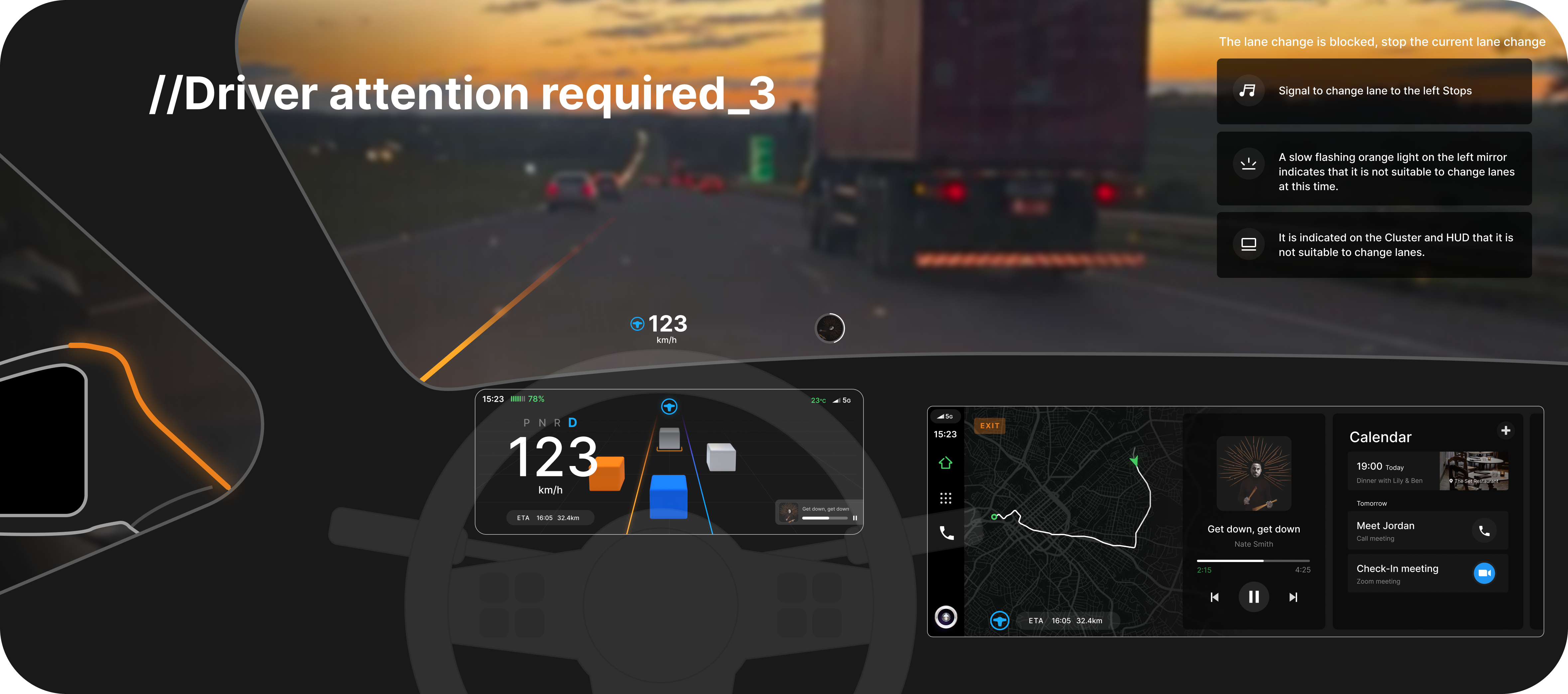
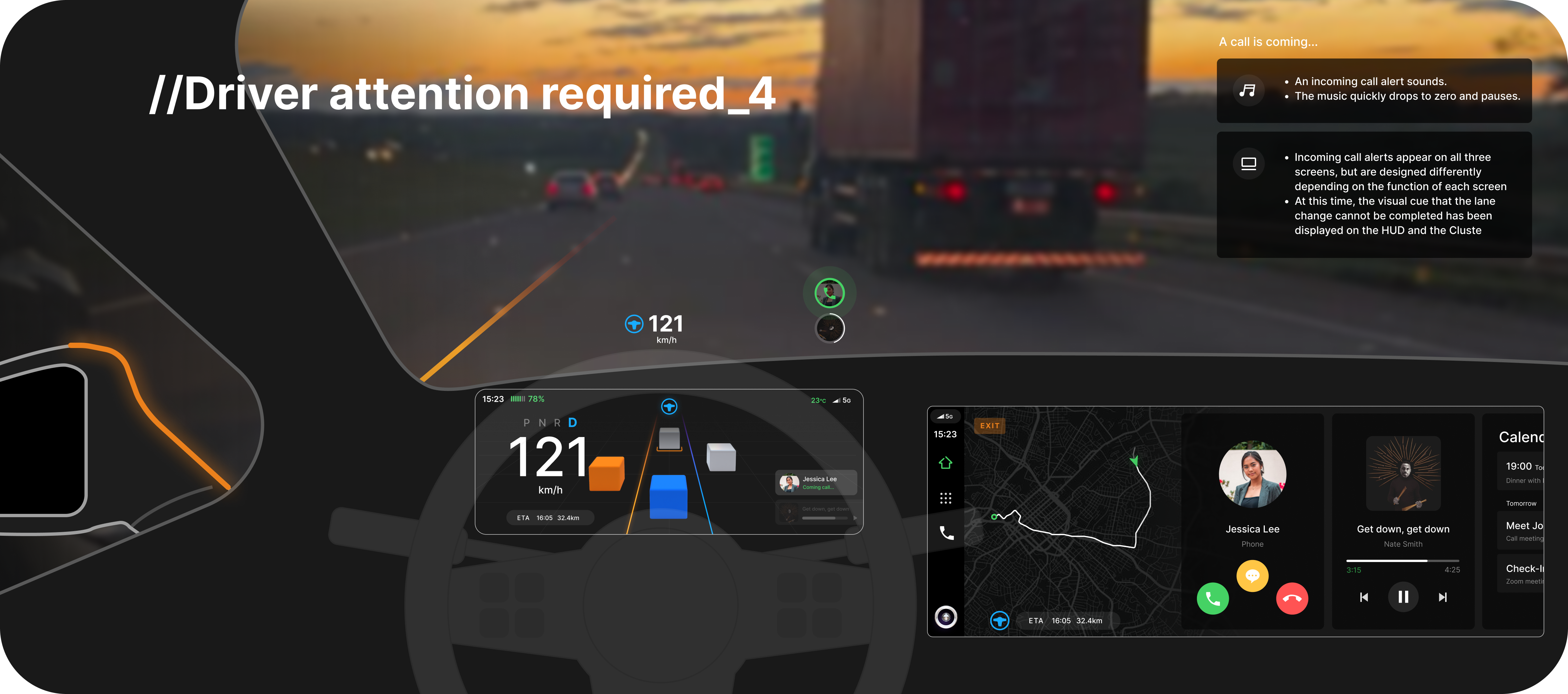
Scenario 4 - The driver is asked to take over the vehicle
